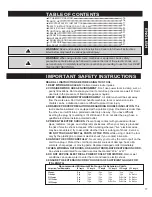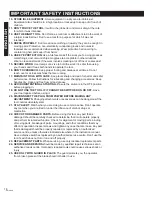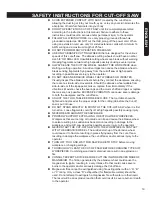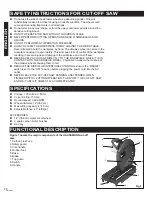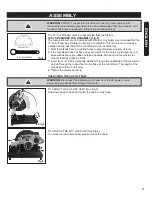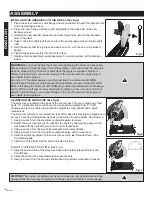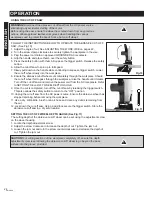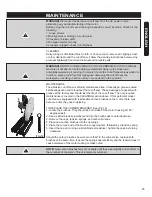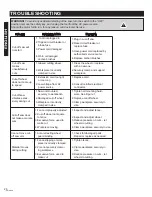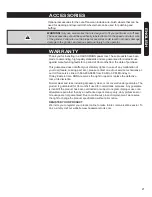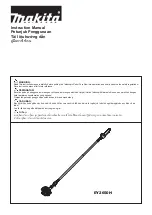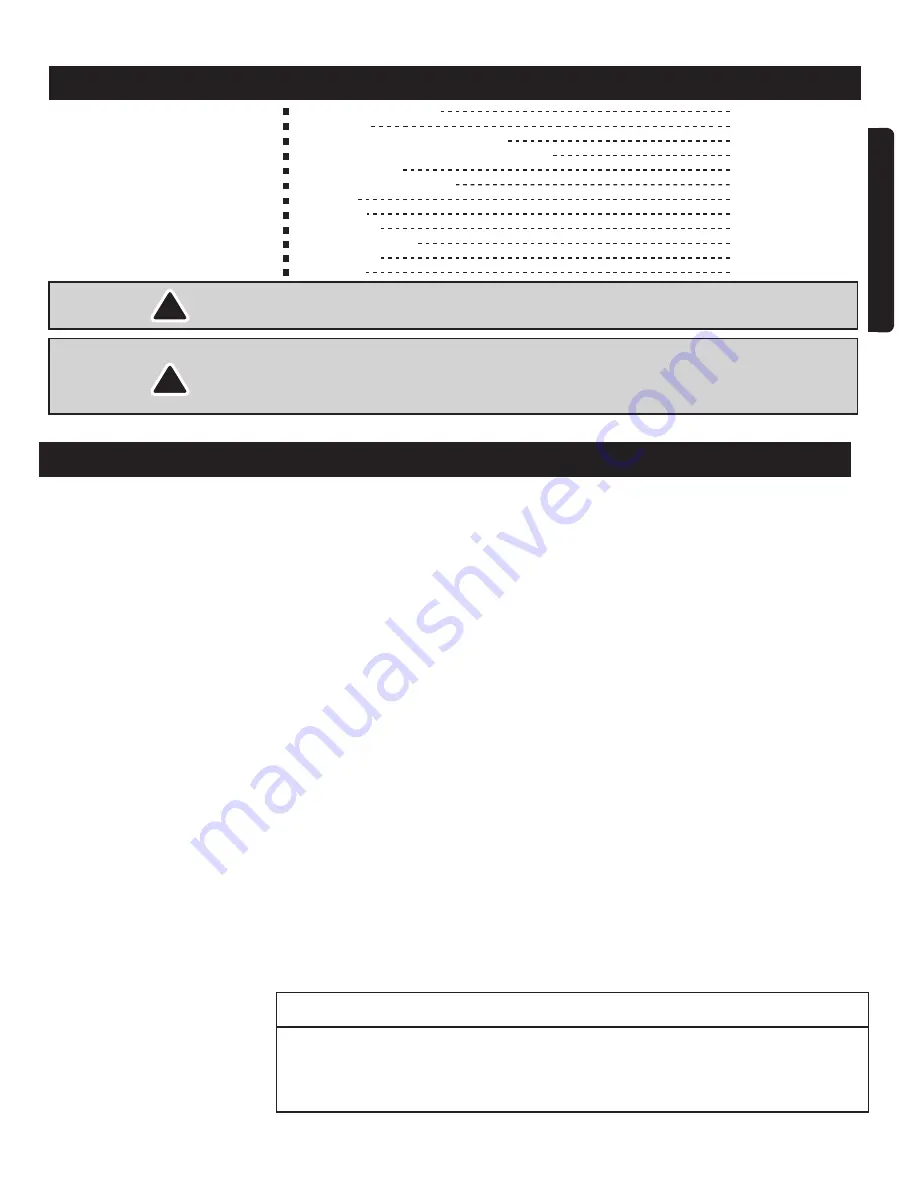
17
ENGLISH
TABLE OF CONTENTS
SCHEMATIC DRAWING
p.15
p.16
p.17
p.19
p.20
p.21
p.23
OPERATION
p.20
IMPORTANT SAFETY INSTRUCTIONS
SPECIFICATIONS
FUNCTIONAL DESCRIPTION
ASSEMBLY
PARTS LIST
SAFETY INSTRUCTIONS FOR CUT-OFF SAW
p.25
p.27
MAINTENANCE
WARRANTY
TROUBLESHOOTING
ACCESSORIES
p.26
p.27
IMPORTANT SAFETY INSTRUCTIONS
!
!
WARNING!
Read and understand all instructions. Failure to follow all instructions
listed below may result in serious personal injury.
WARNING!
When using electric tools, machines or equipment, basic safety
precautions should always be followed to reduce the risk of fire, electric shock, and
personal injury. Completely read the manual before proceeding to use this tool. KEEP
THESE INSTRUCTIONS.
READ ALL INSTRUCTIONS BEFORE USING THIS TOOL.
1. KEEP WORK AREA CLEAN.
Cluttered areas invite injuries.
2. CONSIDER WORK AREA ENVIRONMENT.
Don’t use power tools in damp, wet, or
poorly lit locations. Don’t expose your tool to rain. Keep the work area well lit. Don’t
use tools in the presence of flammable gases or liquids.
3. KEEP CHILDREN AND BYSTANDERS AWAY.
All children should be kept away
from the work area. Don’t let them handle machines, tools or extension cords.
Visitors can be a distraction and are difficult to protect from injury.
4. OBSERVE PROPER PRECAUTIONS REGARDING DOUBLE INSULATION.
This
tool is double insulated. It is equipped with a polarized plug. One blade is wider than
the other, so it will fit into a polarized outlet only one way. If you have difficulty
inserting the plug, try reversing it. If it still doesn’t fit, do not alter the plug; have a
qualified electrician install a polarized outlet.
5. PREVENT ELECTRIC SHOCKS.
Prevent body contact with grounded surfaces:
pipes, radiators, ranges, and refrigerator enclosures. When your body is grounded
the risk of electric shock increases. When working wherever “live” electrical wires
may be encountered, try to ascertain whether there is a danger of shock. Even so,
DO NOT TOUCH ANY METAL PARTS OF THE TOOL
while using it. Hold the tool
only by the plastic grip to prevent electric shock if you contact a live wire.
6. HANDLE THE CORD CAREFULLY.
Never carry your tool by the cord or pull on the
cord to unplug it. Protect the cord from potential sources of damage: heat, oil &
solvents, sharp edges, or moving parts. Replace damaged cords immediately.
7. WHEN WORKING OUTDOORS, USE AN OUTDOOR-RATED EXTENSION CORD.
An extension cord rated for outdoor use must be marked “W-A” or “W”.
8. DO NOT EXPOSE ELECTRICAL POWER TOOLS TO MOISTURE.
Rain or wet
conditions can cause water to enter the tool and lead to electric shock.
9. ENSURE THE EXTENSION CORD YOU USE IS OF SUFFICIENT GAUGE FOR
ITS LENGTH.
Recommended Minimum Wire Gauge for Extension Cords
Amps from Tool Nameplate
25’ length
50’ length
75’ length
100’ length
150’ length
200’ length
0-5 amps
16 ga.
16 ga.
16 ga.
14 ga.
12 ga.
12 ga.
5.1-8 amps
16 ga.
16 ga.
14 ga.
12 ga.
10 ga.
Do Not Use
8.1-12 amps
14 ga.
14 ga.
12 ga.
10 ga.
Do Not Use
Do Not Use
12.1-15 amps
12 ga.
12 ga.
10 ga.
10 ga.
Do Not Use
Do Not Use
15.1-20 amps
10 ga.
10 ga.
10 ga.
Do Not Use
Do Not Use
Do Not Use















